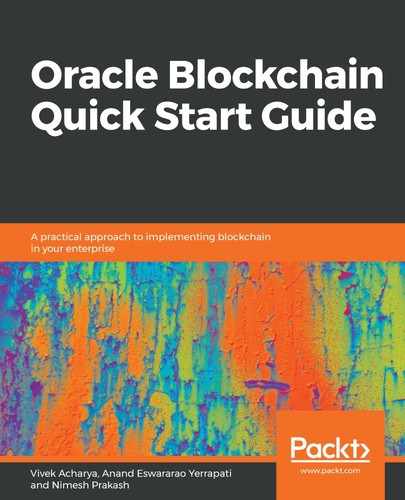The following diagram shows how various systems can integrate with the blockchain business network. Applications can integrate with the blockchain network using REST, SDK, and events. This allows for simplified application development and integration with the blockchain network. Events allow SaaS, PaaS, and custom processes to subscribe to events and respond accordingly.
The business scenario that we have designed in this chapter is because all the participants are part of the KonsensusChain blockchain network and are using the dApp to execute transactions. Such dApps offer a role-based user interface, which allows participants to connect to the application and execute transactions. However, we also discussed transactions, which lead to updating account receivables and updating account payables. AR and AP are the SaaS and on-premise (E-Business Suite) applications of supplier and customer 1, respectively. Such applications can subscribe to blockchain events and act accordingly.
With reference to our business scenario, the seller (supplier) can integrate with the blockchain network (KonsensusChain) via REST and execute the Trade AR Invoice transaction. This transaction will result in invoice discovery at the blockchain network. The bank's application can connect their SaaS, PaaS, and custom processes with the blockchain network via REST and SDK. Customer 2 doesn't have SaaS and they build their processes and applications using BPM solutions. Such applications can also subscribe to blockchain events and connect via REST.
The verifier is using Java, Go, and Node.js for advanced integration:

